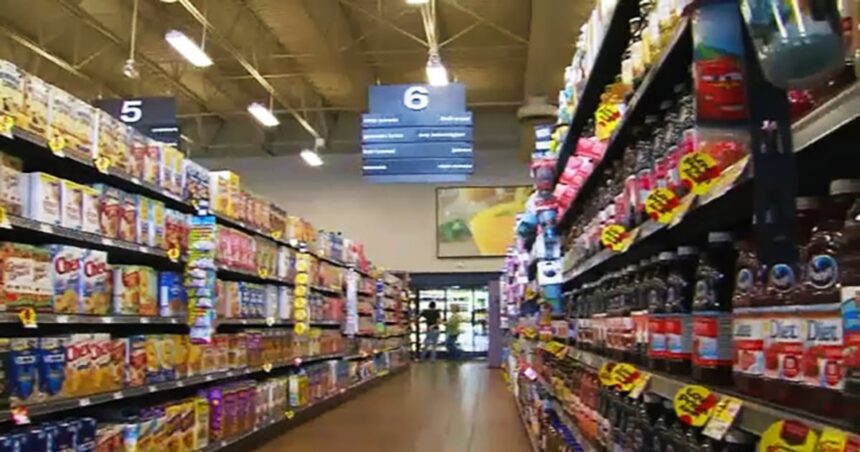The shopping cart shock that has defined Canadian grocery trips for the past three years shows little sign of abating in mid-2025, even as headline inflation numbers cool across the country. While Statistics Canada reports overall inflation has retreated to 2.3% annually, food prices continue to outpace this benchmark, leaving many households struggling to manage their weekly grocery budgets.
“We’re seeing a significant disconnect between the inflation story being told in economic reports and what Canadians are experiencing at checkout counters,” explains Dr. Sylvia Markson, senior economist at the Canadian Consumer Research Institute. “The 4.6% year-over-year increase in grocery prices creates a persistent pressure point for households that simply can’t be avoided.”
A survey of major urban centers reveals particularly steep increases in fresh produce, dairy products, and meat – staples that form the foundation of most Canadian diets. In Toronto’s competitive grocery landscape, price comparisons show a family basket of essentials now costs $287 weekly, representing a $42 increase from just twelve months prior.
The phenomenon has driven dramatic changes in consumer behavior, with 68% of Canadians reporting they’ve switched to discount grocers, begun price-matching, or simply reduced their food consumption. Apps tracking grocery prices have seen a 215% increase in downloads since January, reflecting consumers’ determination to find any available savings.
“I’m spending hours each week planning meals around sales and discounts,” says Jennifer Moreau, a Toronto teacher and mother of three. “Two years ago, I would just shop normally. Now it’s almost a part-time job trying to keep our food costs manageable.”
Industry analysts point to multiple factors extending the grocery price crisis beyond the broader inflation curve. Agricultural challenges including unpredictable weather patterns have disrupted growing seasons across Canada and key import regions. Meanwhile, the highly concentrated nature of Canadian food retail – dominated by just five major chains controlling over 80% of the market – has faced scrutiny from competition authorities investigating whether market power is being leveraged to maintain higher profit margins.
The federal government has responded with its promised Grocery Price Cap Program, which took effect in April. The initiative limits price increases on 67 essential food items to a maximum of 2.5% annually, but critics argue its voluntary nature and limited scope render it largely symbolic.
“The price cap program covers less than 8% of the typical household’s grocery purchases,” notes Miranda Chen, director of food policy research at Carleton University. “And even for those items, we’re seeing package sizes shrinking – ‘shrinkflation’ – which effectively negates the cap.”
Food banks across the country report record demand, with a 32% increase in first-time users compared to 2024. Many of these new clients are employed Canadians who simply can’t stretch their paychecks to cover basic nutritional needs after housing and transportation costs.
Economic forecasts suggest limited relief through 2025, with food inflation expected to moderate slightly to 3.8% by year-end – still significantly above target inflation rates. The Bank of Canada’s monetary policy stance has limited further tools to address sector-specific price pressures without risking broader economic impacts.
As Canadians adapt to this prolonged period of food price pressure, the question increasingly becomes not when prices will return to pre-pandemic levels, but whether our food system requires fundamental restructuring to ensure affordability and access for all. With grocery costs continuing to consume an ever-larger portion of household budgets, will policymakers finally address the structural issues in Canada’s food supply chain, or will consumers be left to weather this storm alone?











